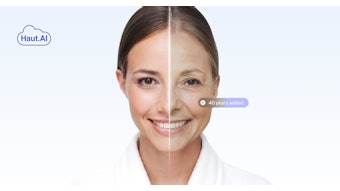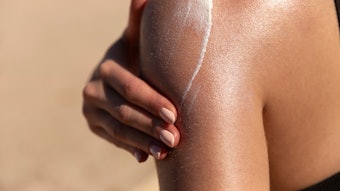
Many factors contribute to skin health, be it new products, eating habits or exercise regimens. But perhaps the biggest irritant that most often goes unnoticed is our environment and, more specifically, pollution. The reason for consumers’ dull complexions or uneven skin pigmentation might be air pollution, and consumers and suppliers are increasingly focusing on how to combat the effects.
The anti-pollution skin care products market is mostly consumer-centric and innovation-driven. As a result, the development of pollution-proof products is increasing, and many brands are creating ways and products to do so.
When it comes to protecting skin from pollution, companies are getting innovative. Between serums, sunscreens and more, products that prevent cell damage caused by air pollution are an increasing area of innovation in the market.
Innovative Anti-Skin Pollution Ingredients
Avoiding sun or air exposure is an unrealistic ask. But there are ways to protect the skin from pollution. Thus, we have seen the most inspiring and innovative skin protection come via improved consumer education.
The best anti-pollution skin care products are rich in active ingredients and give a deep cleanse. Reformulating might not even be necessary, as studies show that many of the ingredients we see today in products support pollution protection. Incorporating those products into already established lines is key. Here’s how products and brands are getting innovative:
- Boosted botanicals: Consumers are increasingly focused on natural products and wellness. This is especially true as more raw materials suppliers conduct clinical studies to support the skin and aid in aging caused by light and air pollution. Boosting products with botanicals is one way companies can target this.
- Exposome: It is commonly known that air pollution affects respiratory and cardiac health, but research shows air and light pollution also affects your skin. No one is free from its effects, though city dwellers have it worse. Airborne pollution, along with the contributing factors within the exposome, can yield skin inflammation, sensitivity, breakouts, aging, dryness and more. As consumers become increasingly aware and concerned about these factors, raw material suppliers are working to support that.
- Formats: From serums and daily creams to cleansers and setting sprays, companies are getting creative in their marketing and formula formats to include anti-pollution agents. In other words, companies are combining steps. For example, Clarins’ UV PLUS Anti-Pollution Broad Spectrum SPF 50 Tinted Sunscreen Multi-Protection is essentially a three-in-one product, including sunscreen, anti-pollution agents and a tint for those who want some color and more coverage on the face.
Elsewhere, Urban Decay created its All Nighter Pollution Protection Environmental Defense Makeup Setting Spray infused with skin-protecting minerals such as zinc and copper. Not only do the labels read “anti-pollution,” but also the products themselves address pollution in various formats.
Peels are also popular, as they provide your body (not just your face) with a deep cleanse. Balms and peels are great for extracting pollutants that build up throughout the day.
Strategies For Integrating Skin Protection into Products
Here again, reformulating might not be necessary to create anti-pollution products. With these innovations in mind, here are three ways that brands can integrate anti-pollution ingredients and agents into skin care:
1. Add Cost-effective Botanical Ingredients
Reading labels can send customers down rabbit holes when looking for anti-pollution skin care products. Incorporating recognizable, natural elements can click with buyers and get them bought into your solutions quicker.
For example, natural products such as glycolic and salicylic acids are not only great for taming breakouts and redness, but also are effective ways to peel off the accumulated layers of grime and pollution the face collects throughout the day. The word “acid” might be off-putting, but don’t worry. With glycolic coming from sugar cane and salicylic originating from willow tree bark, each is classified as a keratolytic agent.
Niacinamide, meanwhile, supports the skin barrier and aids in blue light protection, plus it’s an effective anti-aging agent. Sandalwood oil is a botanical ingredient that can boost overall wellness, studies suggest.
2. Account for Underrepresented Communities.
Don’t paint your entire customer base with one broad brush. Instead, account for differences in your consumers and incorporate them into your production processes. Include underserved populations whose specific skin needs might require further testing and validation. Pollution affects different skin types and tones in different ways, and there is still more research to be done.
3. Create Products with Multiple Functions and Benefits
Skin care falls into several buckets these days. No longer is someone’s favorite moisturizer just a moisturizer. Consumer trends show the push toward easy and efficient products. When a product checks off multiple boxes, such as coverage and sunscreen, consumers are all about it. Try a combination of exposome-supporting ingredients within one hero SKU for a multi-faceted approach. Therefore, multiple effects of environmental aggressors are addressed.
Together, companies can cater to what consumers want and are concerned about: wellness and pollution. Pollution-proof products don’t have to break the bank or require a totally new business model. By incorporating these strategies, anti-pollution is easier to attain.
Becca Anderson is the director of product development and education at Cosmetic Solutions Innovation Labs, a contract manufacturer and innovation partner.
 Becca Anderson.
Becca Anderson.










